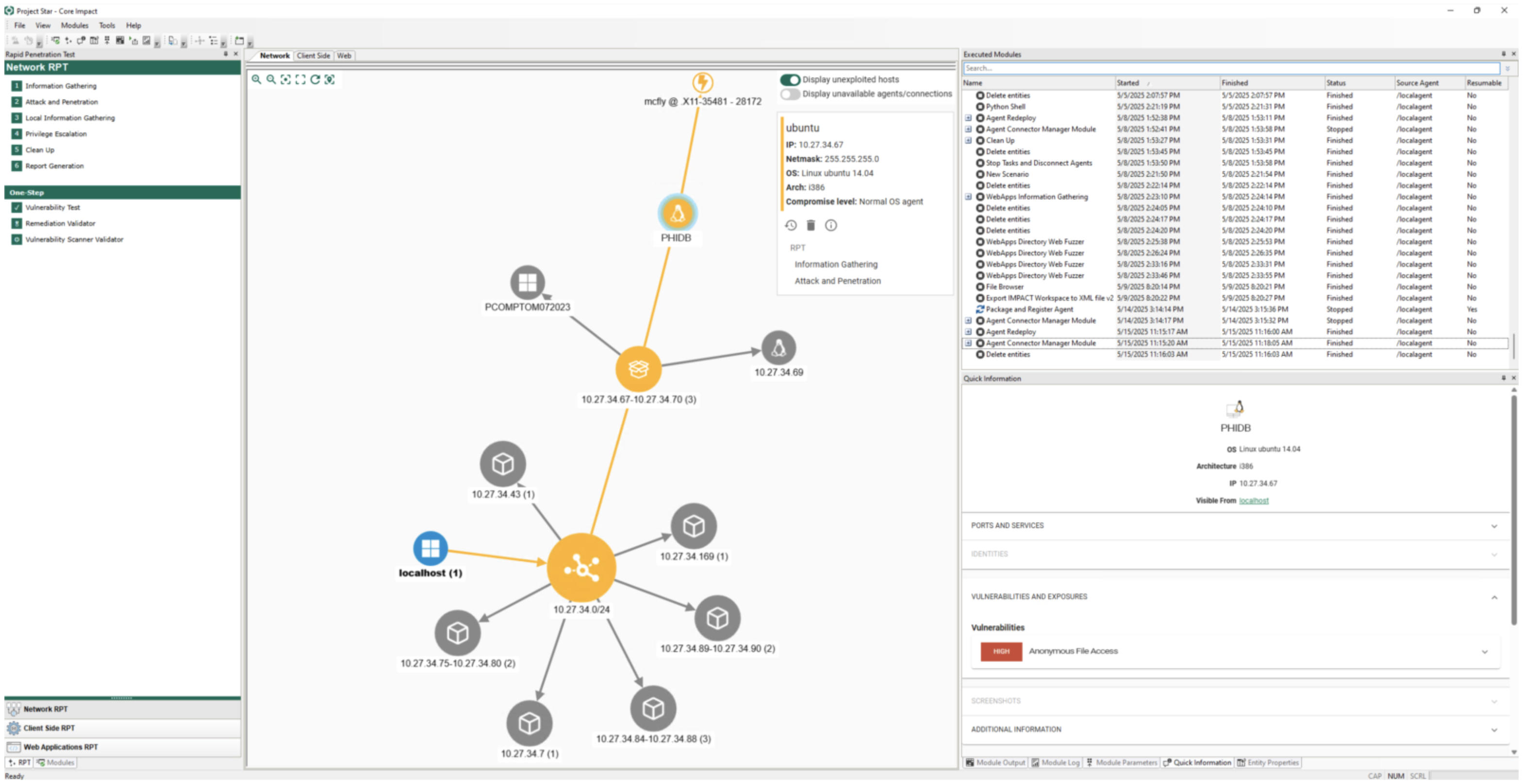Objective:
To continuously assess and strengthen the hospital’s cybersecurity posture using automated penetration testing software that simulates attacks on digital assets and networks.
Actors:
-
IT Security Team: Uses the software to identify vulnerabilities
-
Compliance Officer: Monitors compliance with HIPAA and cybersecurity standards
-
Hospital Management: Reviews reports and allocates resources based on risk findings
-
Penetration Testing Software (e.g., Core Impact): Performs automated discovery, remote exploitation, lateral movement and privilege escalation, and reporting
Preconditions:
-
The hospital network, systems, and applications are connected and operational
-
The penetration testing software is licensed, installed, and configured
-
Scope is clearly defined to avoid disruptions to patient care
Workflow:
1. Define Scope and Targets
Hospital systems including the patient portal, EHR, IoT devices and internal network are selected for testing.
2. Run Reconnaissance and Scanning
The software maps the network, identifies open ports, services, and operating systems.
3. Exploitation and Attack
The tool safely runs exploits associated to known vulnerabilities (CVE-based) and looks automatically for injection vulnerabilities on web applications, runs privilege escalation exploits on compromised targets, does credential harvesting, and simulates ransomware propagation.
4. Analyze Results and Risk Levels
Vulnerabilities are prioritized based on exploitability and business impact (e.g., a flaw in the EHR system is rated as critical).
5. Generate Reports
Reports are created for IT teams (technical detail) and for executives (risk overview, compliance gaps).
6. Remediation and Retesting
After fixes are applied, the software is used to verify that vulnerabilities have been properly mitigated.
Example Outcome:
-
Discovered outdated firmware on Wi-Fi access points vulnerable to remote code execution
-
Detected hardcoded credentials on networked medical imaging systems
-
Found misconfigured file permissions exposing PHI to all employees

Benefits:
-
Ongoing, scalable, and repeatable security assessments
-
Reduced reliance on costly manual testing
-
Early detection of vulnerabilities before attackers exploit them
-
Supports regulatory compliance (HIPAA, NIST, ISO 27001)
-
Protects patient data and hospital operations
Postconditions:
-
Security posture is improved
-
Compliance reports are ready for audit
-
A schedule is created for periodic testing (e.g., quarterly)
See Core Impact in Action
Conduct advanced penetration tests with ease and efficiency. See what our powerful penetration testing platform can do by viewing this on-demand demo.